The AMD Ryzen 5 2500X and Ryzen 3 2300X CPU Review
by Ian Cutress on February 11, 2019 11:45 AM EST
Despite AMDs resurgence to kick it with the high end of mainstream processors, the biggest volume sales occur more in the mid-range where the parts are often competitively priced. In the segment, AMD currently has the Ryzen 5 2600 and the 2400G at retail, but OEMs can use two others: the 2500X and the 2300X. We don't know if we'll ever see these at retail, but we obtained both CPUs for a review.
AMD’s Ryzen 2500X and Ryzen 3 2300X: Filling in Some Gaps
Much like the first gen counterparts, the 2500X is a quad core processor with simultaneous multi-threading while the 2300X is a straight forward quad core. The X processors usually have a higher thermal design power (TDP) than hypothetical non-X equivalents, allowing them to take advantage of AMDs Extreme Frequency Range technology for higher turbos for longer given sufficient cooling, although these are set at 65W, similar to non-X processors. Normally X processors come with better stock coolers at retail, however as these are OEM only processors, it is up to the system integrator to provide sufficient cooling.
| AMD's Mainstream Stack | ||||||||
| AnandTech | Zen | Cores w/SMT |
Base Freq |
Turbo Freq |
L3 (MB) |
Vega CUs |
TDP | MSRP |
| Ryzen 7 2700X | Zen+ | 8 / 16 | 3700 | 4300 | 16 | - | 105W | $329 |
| Ryzen 7 2700 | Zen+ | 8 / 16 | 3200 | 4100 | 16 | - | 65W | $299 |
| Ryzen 5 2600X | Zen+ | 6 / 12 | 3600 | 4200 | 16 | - | 95W | $229 |
| Ryzen 5 2600 | Zen+ | 6 / 12 | 3400 | 3900 | 16 | - | 65W | $199 |
| Ryzen 5 2500X* | Zen+ | 4 / 8 | 3600 | 4000 | 8 | - | 65W | - |
| Ryzen 5 2400G | Zen | 4 / 8 | 3600 | 3900 | 4 | 11 | 65W | $169 |
| Ryzen 3 2300X* | Zen+ | 4 / 4 | 3500 | 4000 | 8 | - | 65W | - |
| Ryzen 3 2200G | Zen | 4 / 4 | 3500 | 3700 | 4 | 8 | 65W | $99 |
| Athlon 240GE | Zen | 2 / 4 | 3500 | - | 4 | 3 | 35W | $75 |
| Athlon 220GE | Zen | 2 / 4 | 3400 | - | 4 | 3 | 35W | $65 |
| Athlon 200GE | Zen | 2 / 4 | 3200 | - | 4 | 3 | 35W | $55 |
| * Released but not at retail | ||||||||
Both of these processors use AMD's Zen+ microarchitecture, built on GlobalFoundries' 12nm manufacturing process node. This means it has better voltage, frequency, and power characteristics over the first generation Ryzen, allowing them to run faster at the same power, or cooler at the same performance. AMD has also applied minor tweaks to the design, which gives the processor an additional 3% performance at the same frequency to first generation Ryzen. We tested and verified these claims in our review of AMD's first Zen+ processors.
www.anandtech.com/show/12625/amd-second-generation-ryzen-7-2700x-2700-ryzen-5-2600x-2600/4
Tackling the Midrange
If you believe the sales numbers posted by German retailer MindFactory, or the bestselling lists over at Amazon, it would be hard not to notice that out of the first generation of Ryzen processors, the Ryzen 5 1600 has been one of the top best sellers. At an initial release price of $219, followed by subsequent cuts, it hit an aggressive price point and offered six high performance cores with simultaneous multi-threading where Intel could only offer four cores without hyperthreading. It also allowed for overclocking, providing users with the potential to squeeze more out of the processor if they had the cooling to do so. Pair this CPU with a good mid-priced motherboard and the bundled cooler and it is easy to see why this CPU had been successful.
For the second generation of Ryzen, AMD launched four CPUs at retail: the 2700X, 2700, 2600X, and the 2600, which we reviewed at launch (click here for the review). Technically we have a direct replacement to the 1600 in the 2600, which at $199, is very competitive. However, in contrast to the first generation of CPU-only products, AMD never did fill up the rest of the processor stack with CPU-only options. Under the 2600, AMD recommends the 2400G, a quad core with simultaneous multi-threading and integrated graphics at $169, then the 2200G at $99 which is another quad core with integrated graphics but without simultaneous multi-threading. AMD used to have four processors in this space (1500X, 1400, 1300X, 1200) which were also very competitive. We tested them all when they were launched against the competition, and the parts had obvious strengths and weaknesses.
Despite AMD recommending these parts with integrated graphics up to $165 (current Amazon pricing), it would appear that their system builder partners have requested a CPU only option below this price point. This is where the Ryzen 5 2500X and Ryzen 3 2300X come in. These parts are generational updates against the 1500X and 1300X, but at present only available to AMD’s partners that build full systems. These parts cannot be ‘officially’ purchased at retail; however it is likely that some will filter out onto the grey or second hand markets.
The main obvious reason for not releasing several parts at similar price points is to cannibalize each other’s sales – by offering the 2500X and 2300X as OEM-only parts, it allows AMD to maintain a rigid stock based on order requirements, while the 2400G/2200G can be sold on the open market. There could be the argument from the side of PR that at this price bracket, $150 and below, emerging markets benefit most from integrated graphics solutions. But that doesn’t preclude selling these parts at retail elsewhere in the world. Regardless of the reasons, we still wanted to test these CPUs to see where they stand, and ultimately if the sub-$150 plus discrete GPU self-builder would benefit from a CPU-only option.
Competition
Normally when we compare processors, we compare on two fronts: core/thread count, and price. Very rarely do our review processor(s) have the same contestant for both. In this case, we don't have a list price for the 2300X or 2500X, which makes this a little difficult. In order to be competitive however, we would expect the two CPUs to fit price wise where their naming suggests - above the 2200G and 2400G respectively.
When it comes to competitive Intel processors then, on price, the competition is around the Core i3-8100 at $120, or the Core i3-8350K, currently on sale for ~$190. These parts is a quad core without hyperthreading, which automatically puts it on par more with the Ryzen 3 2300X. Intel no longer offers anything below an 8-core with hyperthreading, which makes a comparison with the Ryzen 5 2500X difficult. In terms of thread parity, then either the quad-core Core i3-8100/i3-8350K with four threads is still relevant, or the six core i5-9600K with six threads comes into play, although it is worth bearing in mind that this is a $260 processor. Going for eight threads on Intel for comparison just blows out the budget, making a comparison more irrelevant.
When we set the comparison against AMD, the natural competition is the 2200G and 2400G, but also the 2600, based on price. The 2200G and 2400G are APUs, and this affords a couple of pros and cons. In normal AMD Ryzen CPUs without integrated graphics, the silicon has eight cores split into two 'core complexes' of four cores each. Transferring data between cores thus has two latencies - within a complex it is fast, but between the complexes it is slightly slower. There are two ways to enable four cores on this design, in a 2+2 configuration, which gives access to the full L3 cache on each complex but has slower complex-to-complex communication, or a 4+0 configuration which keeps core communication fast but halves the L3. As the Ryzen 5 2500X and Ryzen 3 2300X only have half the L3 available, this means they are in 4+0 mode. If we compare this to the APUs, the 2200G and 2400G, because they combine one quad-core complex with integrated graphics, they also do not have a complex-to-complex latency, but the downsides of the APU configuration though is that these parts only have 4 MB of L3 cache (compared to 8MB), and they are running on the older Zen microarchitecture, which clock for clock is around 3% slower.
If AMD ever decides to release these processors at retail with corresponding stock coolers, on paper at least, they appear to be very competitive. This is one reason why we are testing these parts in a review.
Pages In This Review
- Analysis and Competition
- Test Bed and Setup
- 2018 and 2019 Benchmark Suite: Spectre and Meltdown Hardened
- CPU Performance: System Tests
- CPU Performance: Rendering Tests
- CPU Performance: Office Tests
- CPU Performance: Encoding Tests
- CPU Performance: Web and Legacy Tests
- Gaming: World of Tanks enCore
- Gaming: Final Fantasy XV
- Gaming: Shadow of War
- Gaming: Civilization 6
- Gaming: Ashes Classic
- Gaming: Strange Brigade
- Gaming: Grand Theft Auto V
- Gaming: Far Cry 5
- Gaming: Shadow of the Tomb Raider
- Gaming: F1 2018
- Power Consumption and TDP
- Conclusions and Final Words


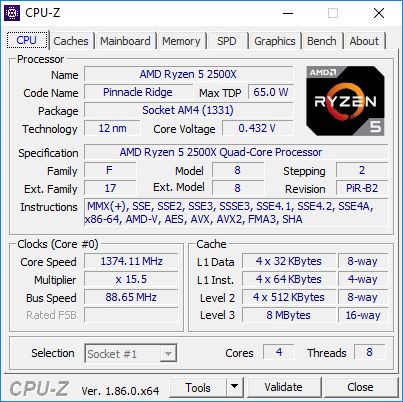
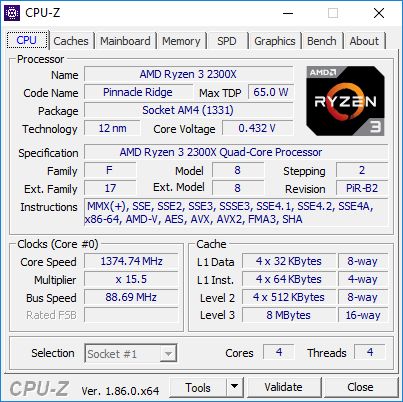
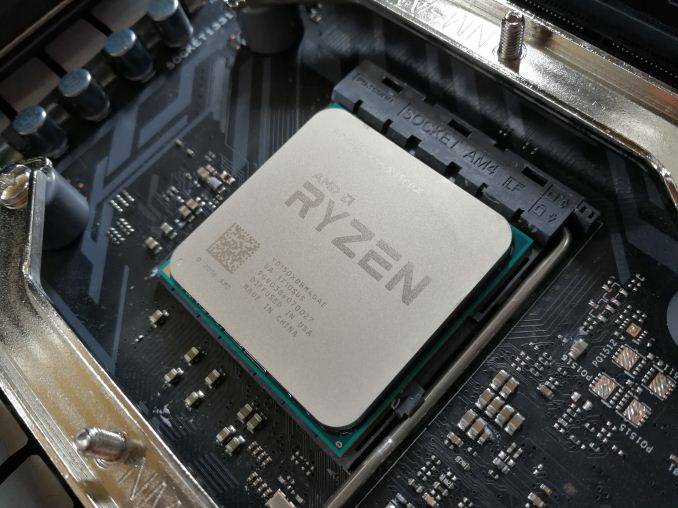

%20-%20Copya_678x452.jpg)
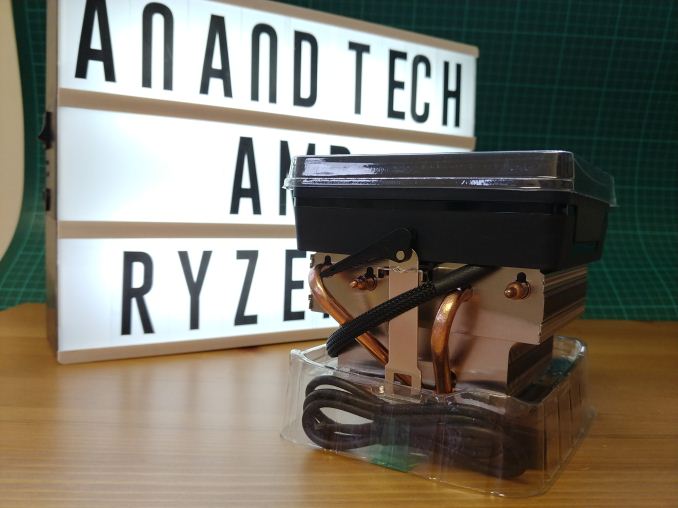
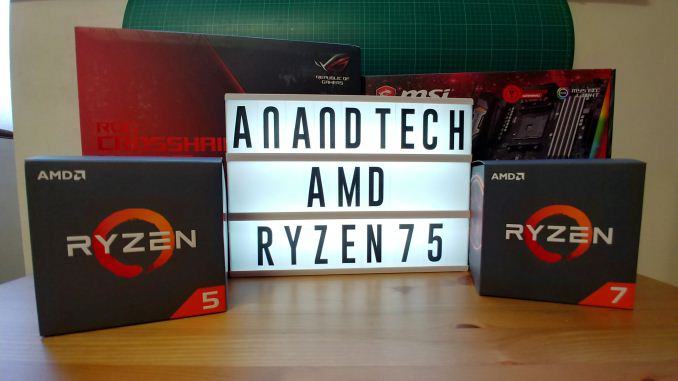
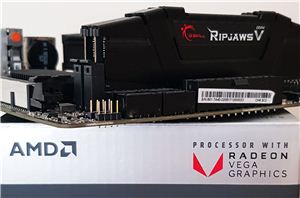
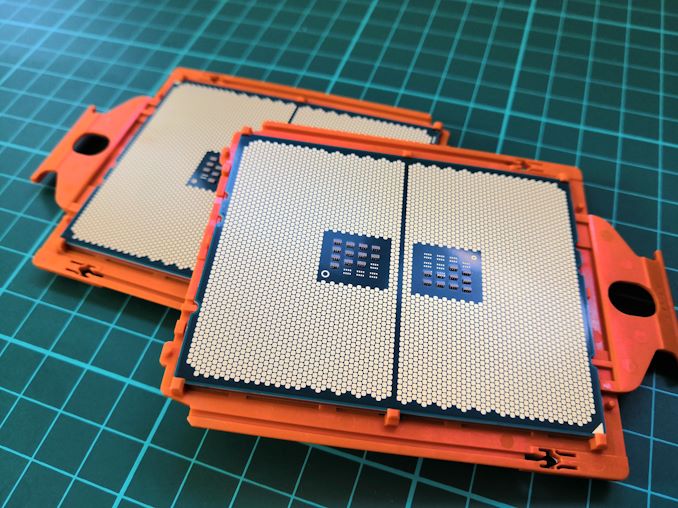
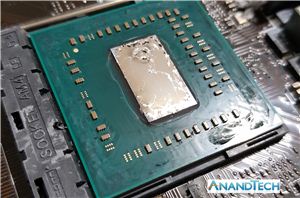








65 Comments
View All Comments
Daeros - Monday, February 11, 2019 - link
Your Intel bias is showing again, Ian. You've pitted a very nice selection of midrange processors from AMD against some very nice, almost double the price chips from Intel. If you're going to include the i5-8400 and i5-8600k, why not the R7 2600x or 2700? They're price-point competitors. But then, Intel wouldn't be at the top of the charts in almost any of the tests, would they?Ian Cutress - Monday, February 11, 2019 - link
All the data is in Bench for those parts. I mention repeatedly (as I did in our buyer's guide) that Intel doesn't really have anything competitive from 8th/9th Gen in the $120-$200 range. I put some parts in that are at least offer thread parity, as explained on page one of this review, if you read that far. But then again, Intel's 8th gen chips are priced well above the usual price right now.Subsequently, your data bias is showing. It's not about being at the absolute top of the graph. It never has. It's about competing with what's around you and some context either side from major competitors. If you want to compare higher priced parts against higher priced parts, then there's either a benchmark database to look at, or the corresponding reviews for those chips.
All quite apart from which, most of my analysis is comparing the AMD parts to other AMD parts because they're not sold at retail and where they would fit in if they did. That's one of the major points of this review.
c4v3man - Monday, February 11, 2019 - link
Is Anandtech trying to acquire an Intel i3-8100 processor for testing? This would seem to be a fairly natural comparison point to these processors at it's $117 customer pricing level. Granted you can approximate the results off the i3-8350K, and assume it's roughly 10% slower, but having actual numbers would be preferred over manual re-calculations.HStewart - Monday, February 11, 2019 - link
What about i5-8400T - according to ARC it price at $179 which will be in price range you statedhttps://www.intel.com/content/www/us/en/products/p...
Big difference is that it does not have Hyperthreading, been 6 cores without hyperthreading it could be serious competitor to Ryzen 5 2500X - it does have lesser max frequency than normal 8400
Korguz - Tuesday, February 12, 2019 - link
HStewart...that price.. could be an intel suggested price, or the tray price....
HStewart - Tuesday, February 12, 2019 - link
It is the price on Amazon, and selling outhttps://www.amazon.com/Intel-CM8068403358913-Core-...
MattMe - Tuesday, February 12, 2019 - link
@Ian - Whilst not quite as militant as some other forum users, I do agree that the testing and comparisons you have used here are not the most appropriate or useful. A similarly priced Intel CPU like the i3 would demonstrate competitive value in the marketplace. If we are including the more expensive Intel CPUs (because of their similar thread count, which I understand) then the graphs should have the equivalently priced AMD alternatives, again to help consumers understand the value proposition from both sides.Regarding the games/GPU options, I feel the testing you have carried out is useful, and although it's unlikely these CPUs would be paired with such a high-end GPU, we are at least ruling out the GPU being the limiting factor until reaching 4k, where your graphs demonstrate that the CPU is no longer the bottleneck. Without doubling the number of tests and data presented in the articles, I feel you've presented the most useful benchmarks and information. You'll never please everyone, I suppose.
Overall I think this is another fantastic write-up and appreciate the effort you put into the research and testing, but I can understand some people's frustrations when it comes to the comparisons you have chosen to demonstrate.
mikato - Thursday, April 4, 2019 - link
Well said"If we are including the more expensive Intel CPUs (because of their similar thread count, which I understand) then the graphs should have the equivalently priced AMD alternatives, again to help consumers understand the value proposition from both sides."
Phynaz - Monday, February 11, 2019 - link
Typical AMD - Hot and SlowformulaLS - Monday, February 11, 2019 - link
Typical Phynaz, quit the forums and said he won't be coming back and ended up flat out lying about it. Grow up dude.